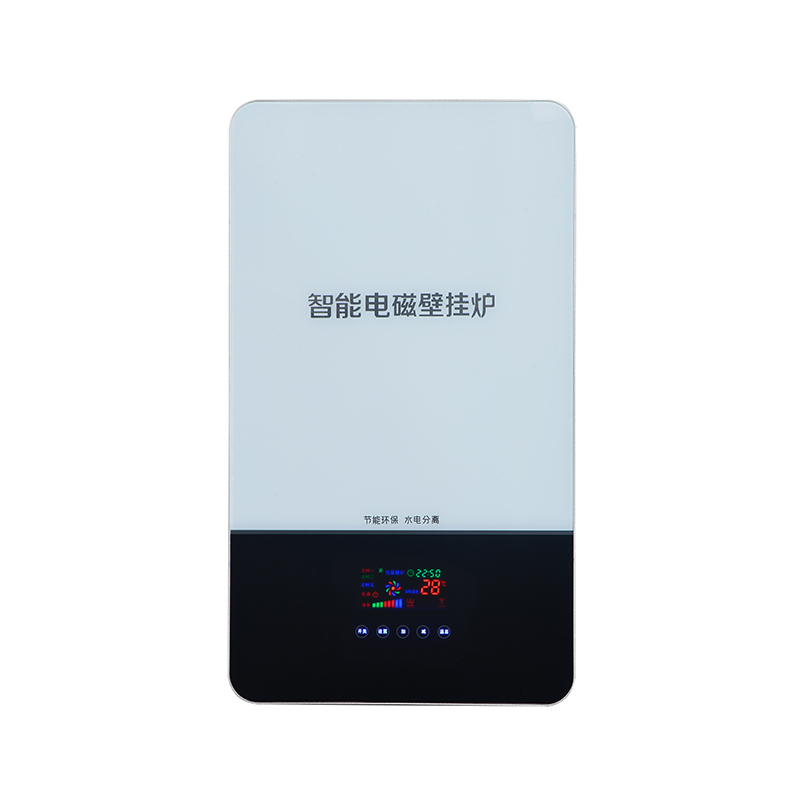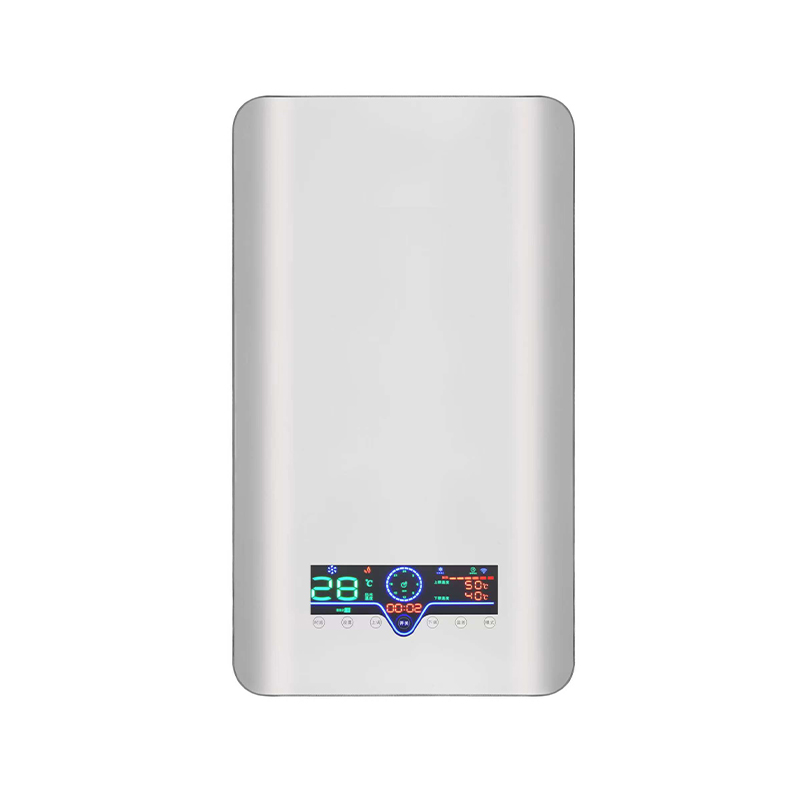Does the electromagnetic heating furnace flat type heating surface adopt an overall uniform heating design?
Release Time : 2025-09-04
In modern industrial heating, laboratory analysis, and high-end manufacturing, temperature uniformity often directly determines the success or failure of process results. Whether it's material heat treatment, chemical reaction heating, sample drying, or wafer annealing in semiconductor processing, significant temperature gradients or localized hot spots on the heating surface can lead to material deformation, uneven reactions, test deviations, and even product rejection. Therefore, as an efficient and clean heat source, whether the flat-type electromagnetic heating furnace utilizes a uniform heating surface is a key indicator of its technological advancement and application reliability. This design not only affects heat distribution but also demonstrates a comprehensive understanding of thermodynamic principles, electromagnetic field regulation, and structural engineering.
Traditional heating methods, such as resistance heating or infrared radiation, often suffer from concentrated heat sources and uneven heat transfer paths. Heat diffuses outward from localized point or linear heat sources, resulting in higher temperatures at the center of the heating platform and lower temperatures at the edges, creating a distinct "overheated center, cooler surroundings" phenomenon. Even extending the preheating time or adding insulation layers cannot fundamentally eliminate this temperature difference. The flat-type electromagnetic heating furnace uses electromagnetic induction to generate eddy currents within the metal heating plate, generating its own heating. This "bulk heating" mode offers a natural advantage for achieving uniform heating throughout the entire heating surface. However, achieving ideal temperature consistency still requires precise optimization of the structural design and electromagnetic field distribution.
The key to uniform heating throughout the entire heating surface lies in ensuring that the heating surface is as isothermal as possible during operation. This primarily relies on the selection of heating plate materials and structural treatment. High-quality heating plates are typically constructed from alloys with excellent thermal conductivity and a low coefficient of thermal expansion. They are forged or precision-machined to avoid thermal resistance variations caused by internal structural unevenness or welded joints. The plate thickness is calculated through thermal simulation to minimize heat loss during lateral conduction and maintain a reasonable longitudinal thermal gradient, thereby achieving synchronized temperature rise on the upper and lower surfaces.
Even more critical is the layout and excitation method of the electromagnetic coil. The heat source distribution in electromagnetic heating is directly influenced by the coil shape, turn density, and current distribution. Uneven coil winding or unbalanced current feeding can create concentrated eddy current areas within the heating plate, leading to localized high temperatures. To this end, advanced flat-type electromagnetic heating furnaces utilize multi-zone distributed coils or spirally symmetrical windings, combined with uniform feeding technology, to achieve highly symmetrical magnetic fields across the entire heating area. Some high-end equipment also incorporates segmented control or dynamic adjustment mechanisms, using multiple independent drive units to adjust power output in each zone in real time, actively compensating for edge heat loss and further improving temperature uniformity.
In addition, the surface treatment and insulation design of the heating surface also influence heat distribution. A flat and smooth surface ensures full contact with the heated object, minimizing uneven heat transfer caused by air gaps. The insulation layer not only provides electrical safety but also requires excellent thermal conductivity and high-temperature resistance to avoid becoming a thermal bottleneck. The overall structure is optimized through finite element thermal-electromagnetic coupling simulation to ensure consistent temperature distribution across various power levels and load conditions.
In practical applications, the value of this overall heat distribution design is particularly evident. In the laboratory, it ensures uniform heating of samples, improving the repeatability and accuracy of experimental data. In the production line, it ensures that batches of products undergo the same heat treatment process, improving yield and process consistency. In scientific research equipment, it provides a reliable temperature foundation for precise measurement and controlled reactions.
In summary, whether the heating surface of a flat-type electromagnetic heating furnace utilizes a uniform heat distribution design is not only a technical detail but also the core of its ability to perform high-precision heating tasks. Through the multi-dimensional synergy of materials, structure, electromagnetics, and control, it transforms "uniformity" from an ideal into reality, allowing heat to spread smoothly across the metal plate like ripples on a lake, silently supporting the pursuit of ultimate temperature control in science and industry.
Traditional heating methods, such as resistance heating or infrared radiation, often suffer from concentrated heat sources and uneven heat transfer paths. Heat diffuses outward from localized point or linear heat sources, resulting in higher temperatures at the center of the heating platform and lower temperatures at the edges, creating a distinct "overheated center, cooler surroundings" phenomenon. Even extending the preheating time or adding insulation layers cannot fundamentally eliminate this temperature difference. The flat-type electromagnetic heating furnace uses electromagnetic induction to generate eddy currents within the metal heating plate, generating its own heating. This "bulk heating" mode offers a natural advantage for achieving uniform heating throughout the entire heating surface. However, achieving ideal temperature consistency still requires precise optimization of the structural design and electromagnetic field distribution.
The key to uniform heating throughout the entire heating surface lies in ensuring that the heating surface is as isothermal as possible during operation. This primarily relies on the selection of heating plate materials and structural treatment. High-quality heating plates are typically constructed from alloys with excellent thermal conductivity and a low coefficient of thermal expansion. They are forged or precision-machined to avoid thermal resistance variations caused by internal structural unevenness or welded joints. The plate thickness is calculated through thermal simulation to minimize heat loss during lateral conduction and maintain a reasonable longitudinal thermal gradient, thereby achieving synchronized temperature rise on the upper and lower surfaces.
Even more critical is the layout and excitation method of the electromagnetic coil. The heat source distribution in electromagnetic heating is directly influenced by the coil shape, turn density, and current distribution. Uneven coil winding or unbalanced current feeding can create concentrated eddy current areas within the heating plate, leading to localized high temperatures. To this end, advanced flat-type electromagnetic heating furnaces utilize multi-zone distributed coils or spirally symmetrical windings, combined with uniform feeding technology, to achieve highly symmetrical magnetic fields across the entire heating area. Some high-end equipment also incorporates segmented control or dynamic adjustment mechanisms, using multiple independent drive units to adjust power output in each zone in real time, actively compensating for edge heat loss and further improving temperature uniformity.
In addition, the surface treatment and insulation design of the heating surface also influence heat distribution. A flat and smooth surface ensures full contact with the heated object, minimizing uneven heat transfer caused by air gaps. The insulation layer not only provides electrical safety but also requires excellent thermal conductivity and high-temperature resistance to avoid becoming a thermal bottleneck. The overall structure is optimized through finite element thermal-electromagnetic coupling simulation to ensure consistent temperature distribution across various power levels and load conditions.
In practical applications, the value of this overall heat distribution design is particularly evident. In the laboratory, it ensures uniform heating of samples, improving the repeatability and accuracy of experimental data. In the production line, it ensures that batches of products undergo the same heat treatment process, improving yield and process consistency. In scientific research equipment, it provides a reliable temperature foundation for precise measurement and controlled reactions.
In summary, whether the heating surface of a flat-type electromagnetic heating furnace utilizes a uniform heat distribution design is not only a technical detail but also the core of its ability to perform high-precision heating tasks. Through the multi-dimensional synergy of materials, structure, electromagnetics, and control, it transforms "uniformity" from an ideal into reality, allowing heat to spread smoothly across the metal plate like ripples on a lake, silently supporting the pursuit of ultimate temperature control in science and industry.





